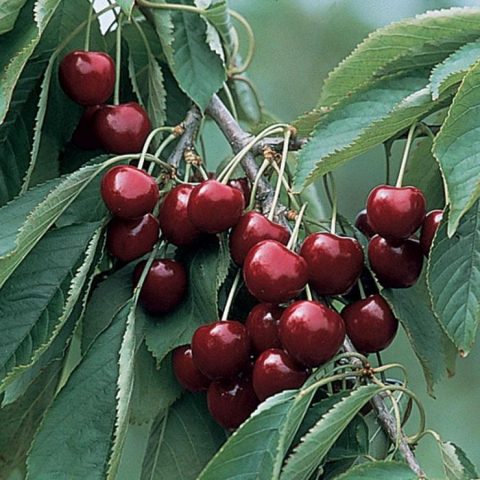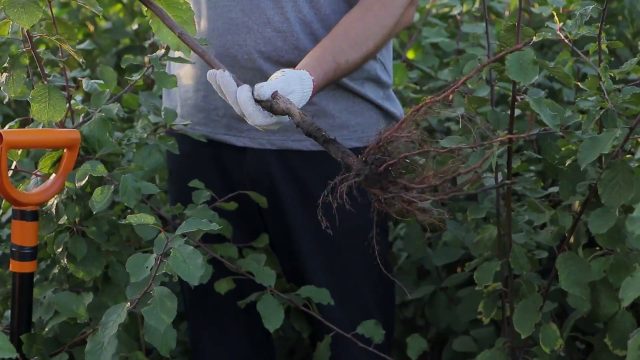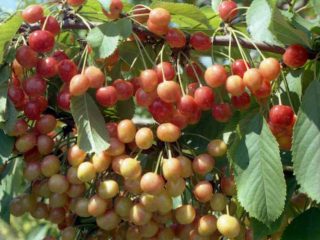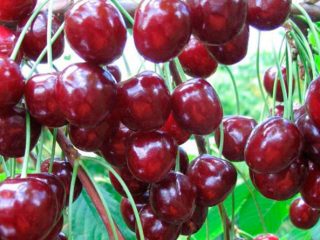Content
Michurinskaya cherry is a fruit and berry crop that is widespread in many regions of the country. The frost-resistant variety meets most of the requirements of modern gardeners. The excellent taste of the fruit, early and late periods of ripening, regular, abundant fruiting have made cherries a popular and sought-after planting in summer cottages.
History of variety selection
The history of the variety begins in 1994. Scientist T.V. Morozova conducted selective experiments at the All-Russian Research Institute named after I.V. Michurin. Leningrad cherry seeds were processed. The result was a new variety - the Michurinsky variety.
Description of Michurinskaya cherries
The Michurinsky variety is represented by two subspecies:
- Early cherry. The subspecies is characterized by early flowering and fruit ripening. The berries are dark red in color and round in shape.A tree of medium height with a wide, branched, pyramidal crown. The first fruiting occurs after 4-5 years.
- Late cherry. Has a similar description to its earlier counterpart. The harvest is harvested late. The berries ripen in the second half of July.
Varieties of Michurinskaya cherries have common characteristic features:
- The tree grows quickly. Maximum height is 3-4 m.
- The crown of the cherry tree is dense. The shoots are straight and thick. The leaves are dark green, oval.
- The variety blooms with white flowers similar to roses.
- Dark red, heart-shaped fruits. The taste is sweet. The berries are juicy.
The Michurinsky variety is favorable to droughts and frosts. With proper care, late and early cherries can be planted in the northern and southern regions:
- Krasnodar region.
- Rostov region.
- Moscow region.
- Leningrad region, others.
Characteristics of the variety
The characteristic features of Michurinskaya cherries are the basis for carrying out care procedures, choosing a planting site, ensuring the right growth conditions, and developing the fruit and berry variety.
Drought resistance
Michurinskaya cherries are favorably planted in the southern regions. The hot climate has a beneficial effect on the abundance and quality of the harvest. The life span of the variety in such conditions reaches 20 years. Be sure to water the tree regularly and in a timely manner.
Frost resistance of Michurinskaya cherries
The Michurinsky variety is distinguished by a high level of frost resistance. It can be planted without fear in the northern and central regions. For wintering, the tree will need additional shelter, but this will not cause much trouble to its owners.
Pollinators of the Michurinskaya cherry
A feature of the early and late subspecies of the Michurinsky variety is non-self-fertility. To obtain a harvest of tasty berries, there must be other pollinating trees near the tree. The best options would be:
- Michurinka.
- Pink pearls.
- Biggaro Burlat.
The variety is not fast-growing. Early cherries bloom and bear fruit at the beginning of the warm season. Late Michurinskaya blooms in spring. Its first fruits are harvested at the end of July.
Productivity, fruiting
The first fruiting of early Michurinskaya cherries occurs 4-5 years after planting the seedling. The late variety produces a harvest in the 5th-6th year. Both subspecies regularly produce many berries.
Area of application of berries
The fruits of Michurinsk cherries are used in different ways. They are great for cooking compotes, juices, and jam. Fresh sweet berries are a great summer dessert option.
Resistance to diseases and pests
One of the advantages of Michurinskaya cherries is a high level of resistance to plant diseases and insect damage. Carrying out the necessary preventive measures to protect and protect the tree will minimize the possibility of their occurrence.
Advantages and disadvantages of the variety
Due to many advantages, early and late Michurinskaya cherries are considered popular fruit and berry trees:
- Possibility of growth in different climatic conditions. This feature makes it possible to cultivate both subspecies in the southern, northern, and central regions of the country.
- High level of resistance to diseases and pests. This reduces the time and costs of additional resources for care procedures.
- Two periods of fruit ripening.Early cherries bear fruit at the beginning of the warm season, while late varieties delight owners with fruit ripening in mid-summer.
- Ripe berries do not fall off.
- Regular, abundant fruiting.
Some gardeners consider the self-sterility of early and late cherries to be a disadvantage. This distinctive feature will not cause disappointment if there are suitable pollinators near the tree.
Landing Features
Planting early and late cherries is a simple process. Its implementation will not require significant time or material resources. It is enough to follow the recommendations of experienced gardeners so that the result is a high-quality, healthy planting of the Michurinsky variety.
Recommended timing
It is recommended to plant seedlings in the spring. Autumn rooting of the plant may not be successful due to early frosts. The tree will not have time to acclimatize.
Choosing a suitable location
The landing site should be well lit. Michurinskaya cherry does not like shade. Outbuildings should remain to the side without creating artificial shading. The area for the seedling must be protected from drafts and cold winds. The distance between plantings should be maintained. The best option: 2 m – between seedlings, 3 m – between rows of trees.
The soil for the Michurinsky variety should allow moisture to pass through well. Cherries do not like swampy soil. It causes rotting of the root system.
What crops can and cannot be planted nearby?
Trees with a wide, spreading crown will not be good neighbors for early and late cherries. They will create shade for the seedlings and reduce the amount of harvest to a minimum. The best option for immediate planting will be pollinating varieties.
Selection and preparation of planting material
Gardening tools for planting seedlings must be prepared in advance:
- Shovel for holes.
- Rake, hoe, hoe for loosening.
- Fertilizer.
- Wooden stake, rope for fixing the handle.
- Water.
Landing algorithm
Planting begins with choosing a seedling. There are a few important points to pay attention to:
- Seedlings with grafting take root better. They are less affected by plant diseases and harmful insects.
- The shoots and trunk must be in good condition.
- The rhizome is developed, without dry shoots.
- Smooth bark is a sure sign of a healthy seedling.
After successfully selecting a seedling, they begin the step-by-step planting process:
- Preparing a hole with a diameter of at least 60 cm.
- Garden soil is mixed with organic fertilizers.
- The mixture is poured into the recess and a wooden stake is installed.
- The seedling is lowered into the hole. Its roots are spreading out. The distance to the ground must be at least 5 cm.
- Gradually they begin to fill in the soil, compacting it around the seedling.
- Abundant watering at the end of planting is a mandatory step. After this, the soil is loosened and mulched.
Aftercare for cherries
Early and late Michurinskaya cherries are an unpretentious variety. Standard care measures should be carried out regularly, in accordance with the needs of the plant:
- Watering. Moisturizing is carried out once a month. Young seedlings need 3-4 buckets, an adult tree – 5-6.
- Trimming. The formation of the crown is carried out in the spring. The cut areas should heal before the onset of the first cold weather. The lower branches are left the longest. Each next level is made shorter than the previous one by 70 mm.
- Fertilizer. They begin to feed the tree from the second year of life. In autumn, urea is used, in spring - superphosphates.
- Preparing for winter.Before the onset of cold weather, the soil around the trunk is dug up, adding organic fertilizers. This will create additional protection for the root system.
- Prevention of plant diseases and insect pests.
Diseases and pests, methods of control and prevention
Disease/pest | Manifestation | Control method/Prevention |
Coccomycosis | Affects leaves and fruits. Most often it appears in June in the form of small red spots and plaque. Affected areas of cherries fall off | Treatment with “Hom”, a solution of Bordeaux mixture. It is not recommended to leave fallen fruits and leaves under the tree. |
Fruit mite | The insect attacks the foliage of the tree. It deteriorates and falls off. The variety stops blooming - due to the disease, the buds do not form | To combat the pest, spraying with insecticides is used. Cleaning the cherry trunk of old bark is considered a mandatory preventive measure. |
Conclusion
Cherry Michurinskaya has long won the recognition of many gardeners. The variety has exceptional advantages: dessert taste of fruits, abundant harvests, ease of care. Thanks to these distinctive features, the fruit and berry crop has become widespread in various regions of the country.











